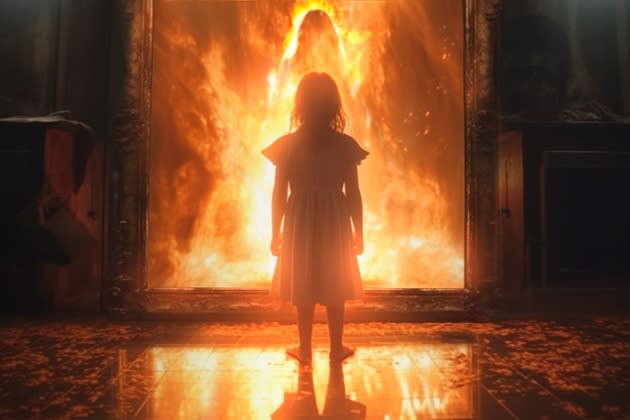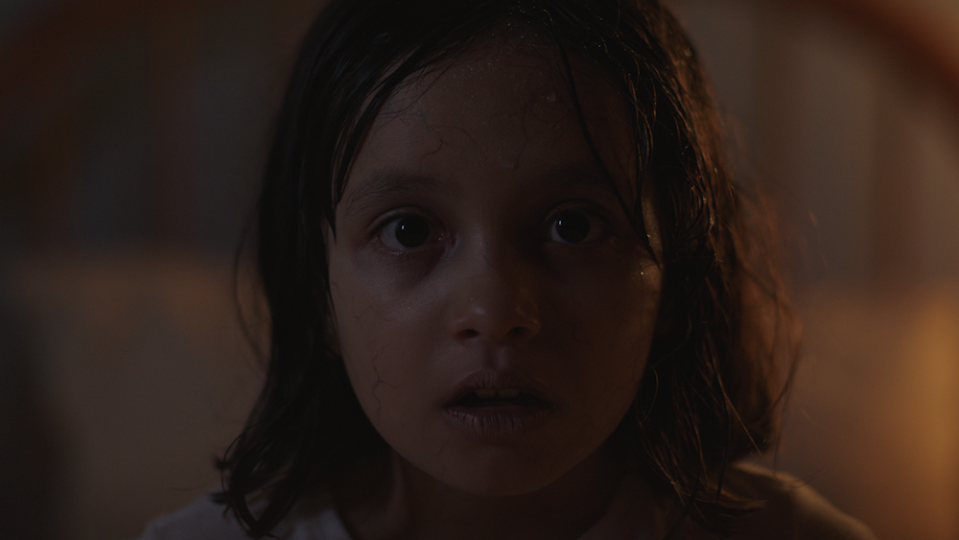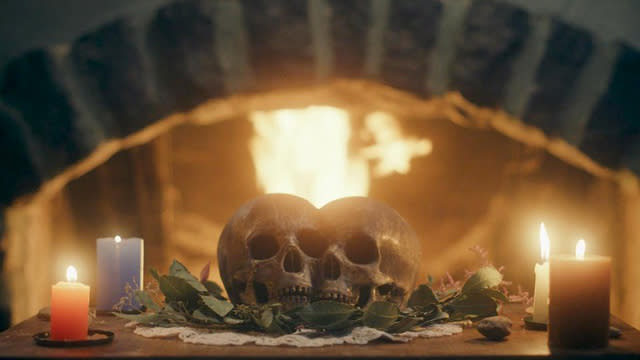Blood Window Showcase Teases 8 Upcoming Films at Cannes: ‘Genre Films Are Now at Their Best’

Cannes Blood Window Showcase is readying to send a shiver down Cannes’ spine, presenting eight upcoming films – in pre and post-production – on Friday.
“Since 2014, our idea has always been to give greater visibility to the projects that have gone through Blood Window at Ventana Sur,” says the head of the program Javier. C. Fernández, calling the event “a celebration for the Latin American genre film community.”
More from Variety
Mads Mikkelsen's Hitman Actioner 'The Black Kaiser' Casts Vanessa Hudgens (EXCLUSIVE)
Sports Drama 'Sweetwater,' Starring Jeremy Piven, Picked Up by Grandave Intl. (EXCLUSIVE)
Presented titles will include “When Evil Lurks” by Demián Rugna, “Mitra, Turn off the Light to See” by Diego Bellochio, Diego Kartaszewicz’s “Buzzing,” Joseph Diaz’s “Bloody Mary,” “The Collector,” directed by Facundo Escudero Salinas and “Chuzalongo” by Diego Ortuño.
“Help” directed by Tamae Garateguy and Nicolas Onetti’s “Selknam” will also be featured.
“Demián Rugna’s ‘When Evil Lurks’ will not go unnoticed among genre lovers. It has all the elements to be one of the best horror movies of the year,” teases Fernández, advertising its “well-defined characters, attractive mythology and a good dose of jump scares.”
The director adds: “It was written before the pandemic but it has adjusted to this world perfectly: here, an invisible evil is also spreading. You have to follow some rules to keep it away, there are people who believe in it and people who don’t, there are conspiracy theories and madness that doesn’t differentiate between the rich and the poor.”
According to Fernández, Latin American genre hasn’t necessarily changed all that much.
“Filmmakers’ obsessions have remained more or less the same for the past 15 years: [they talk] about this battle between light and dark, there is a strong presence of Christian religion. However, in terms of production, the change is more noticeable,” he states.
“I believe that streaming platforms have given genre a privileged position, raising the bar in terms of production quality and quantity. This is the case with AMC’s Shudder, for example, while funds and film institutes are also more accepting. Like Ibermedia, which, together with Blood Window, has proposed a special jury to select genre film projects.”
Female directors are also making waves, from Michelle Garza Cervera to Issa Lopez and the aforementioned Tamae Garateguy, whose “Help” will connect fiction and reality.
“The story takes nourishment from things that happened in Argentina’s dark past. It can also relate to other countries where women were confined for reasons that only served those in charge,” she says.
“The viewers will notice echoes of the abuse cases committed by the Church in many places, even in recent years. When we enter this convent, you instantly feel a sense of dread.”
As pointed out by producer Arelis Ruiz, the film has welcomed women in front and behind the camera, including DoP Connie Martin.
“I don’t really know if we are ‘allowed to take more risks’ [these days] but we do allow ourselves to take them,” says Ruiz, with Garateguy adding: “I always take risks in my films. Those women, who are no longer here, keep screaming through us. Genre films allow me, as a director, to represent latent truth through extreme, fictional stories.”
Yamila Barnasthpol, producer and co-writer of “Mitra, Turn Off the Light to See,” also opens up about difficult topics addressed in the film.
“We conducted an exhaustive investigation into the work of psychologists that help victims of violence in Argentina. We do not re-victimize our protagonist or insert more violence in the scene of abuse, however” she notes.
“My major inspiration is the place where I live: I grew up listening to myths and legends. But the most important starting point was a femicide that took place in 2014. That was the moment when we decided to expose these macabre acts committed by men who use their personal beliefs to justify what they have done.”
“It’s certainly a great moment to develop genre films right now,” observes Joseph Diaz.
“With the success of movies like ‘Smile,’ ‘M3GAN’ or ‘Evil Dead Rise’ and low-budget movies like ‘Terrifier 2,’ audiences are ready to explore more extreme stories, which in turn translates to good box-office results.”
“Collaboration and connection” are also key, stresses producer Roberta Sanchez behind “Buzzing,” while Nicolás Münzel Camaño, who produced “Two-Faced God” – with its director Facundo Escudero Salinas also set to present “Broken” at Tallinn Black Nights’ Goes to Cannes Showcase – compliments genre audiences
“These viewers don’t need a well-known cast to attract them. They also take risks, watching different movies with different themes and countries of origin.”
Movies that, he states, have a power to comment on and criticize social problems without being too explicit.
“Genre films are now at their best,” he says.
The event will take place on May 19 at Palais K. Blood Window will also join the activities of Cannes’ Fantastic Pavilion with the screening of “Aterrados,” also directed by Rugna.
“Bloody Mary”
Pre-Production
Spain
Director: Joseph Diaz
Production Companies: Producciones Dosmentes
Mary, who has experienced abuse since she was a child, is harassed by a terrifying creature. She runs away from home in order to find peace but ends up being abused by Robert, leader of a terrible cult. After a beating, Mary is possessed by the spirit of her ancestor Helena, burnt at the stake for witchcraft.
Joseph Diaz: “It’s only partly a revenge story, since there is a mix of different genres. My references during the writing process were Brian de Palma’s ‘Carrie,’ folk horror movies like ‘Midsommar’ and ‘The Wicker Man’ and, finally, revenge movies like ‘Mandy’ or ‘Kill Bill’ for the third act.”
“Buzzing” (“Abeja”)
Post-Production
Director: Diego Kartaszewicz
Argentina, Paraguay
Production Companies: 16:9Cine, The Lab
Samanta moves to her grandparents’ childhood home, where she begins to have nightmares and discovers that her father went through the same thing in his past. Over time, she becomes seriously ill, but her parents refuse to seek medical help, believing the problem is spiritual rather than medical.
Roberta Sanchez, producer: “The movie will be divided into three parallel stories: Flashbacks, the real and the subjective world. Each of them will have a distinct visual style and color palette. Certain nightmares can continue to affect generations. We want to show how past tragedy can have consequences in the present and affect a child’s life.”

“Help,” (Auxilio)
Post-Production
Argentina, Colombia
Director: Tamae Garateguy
Producers: Néstor Sánchez Sotelo, Daniel de la Vega, Arelis Ruiz Arias
Production Companies: Del Toro Films, Furia Films, Red Vector
It’s 1931. Emilia, a rebellious young woman, is sent to a convent. Her arrival unleashes paranormal manifestations in the place, which become increasingly strong for all confined residents. But even more so for Emilia – like a cry for help which is impossible to ignore.
Tamae Garateguy: “The film immerses us in the world with its own rules, and women who want to break them all, leading the viewer to scenes [eliciting] extreme emotions. I would call this a ‘tale of madness,’ where a group of women who – like the bacchantes from Greek mythology – will lose control in a voluptuous rage.”
“Mitra, Turn Off the Light to See,” (“Mitra, apaga la luz para poder ver”)
Post-Production
Argentina
Director: Diego Bellocchio
Production Companies: Montecine Sas, Coruya Cine SRL
Lucía is helping victims of domestic violence in a small, dark city situated in a province of Argentina. One night, during a light cut-off, her house is invaded by darkness. Sexually abused by a devil’s devotee, after a few months, Lucía gives birth to the supposed Antichrist.
Yamila Barnasthpol, producer: “From a very literal point of view, Lucía represents the struggle against violence and her aggressor, Gurí, symbolizes witchcraft and darkness. He is using pagan tricks in order to attract his victims. He captures Lucía, but she exposes him for what he really is: a psychopath who believes he is a powerful wizard.”
“Red Corn,” (Chuzalongo”)
Post-Production
Ecuador, Peru, Spain, Canada
Director: Diego Ortuño
Production Companies: Dominio Digital
A lost child appears in a remote Andean town at the end of the 19th century. The village priest decides to take care of him but quickly discovers that the only way to keep the child alive is to feed him with human blood.
“Selknam,”
Pre-Production
Argentina, Italy
Director: Nicolás Onetti
Production Companies: Del Toro Films, Minerva Pictures
Sales: Minerva Pictures
At the beginning of the 20th century, the most dangerous criminals in Argentina were sent to the Prison of the End of the World. Built between mountains and a frozen sea, extreme weather conditions and geographical isolation discouraged any possibility of escape. A group of inmates will still try it, however.
Nicolás Onetti: “The film is inspired by a true story and the Ushuaia prison [operating between 1904 and 1947], as well as [anarchist] Simón Radowitzky. My main references are ‘Apocalypto’ and ‘The Revenant’.” The film will also reference the rituals of the Selknam people, exploring the conflict between man and nature.
“Two-Faced God,” (“La Coleccionista”)
Post-Production
Argentina
Director: Facundo Escudero Salinas
Production Companies: Pensilvania Films
Ana, an orphaned teenager, is adopted by the mother of her only friend. They move into the lake house, where the father of her friend tries to study a strange meteorite that “lives” at the bottom of the lake, seeking to take over the land that surrounds it to exploit it economically. But these actions will awaken an ancient pagan cult.
Nicolás Münzel Camaño, producer: “After a meteorite fell there, hundreds of years ago, a pregnant woman bathed in the lake and had a child known as ‘Two-Faced God.’ A community soon formed around him. It’s a mix between a psychologically driven film and special effects, designed specially to create this pagan world.”

“When Evil Lurks,” (“Cuando Acecha la Maldad”)
Post-Production
Argentina
Director: Demián Rugna
Production Companies: Machaco Films, Aramos Cine, in co-production with Shudder
A group of small-town residents discover that a demon is about to be born, threatening the peace of the community. They decide to get rid of it, without realizing they have made too many mistakes. Now, they must escape before evil spreads like a virus and it will be too late. First original Shudder production in Spanish.
Demián Rugna: “The inspiration for this movie was ‘The Road’ and ‘Evil Dead’ movies. This feeling that you don’t know where, and how, evil is going to attack. I also [wanted to show] the tragedy of a father, trying his best to save his family. We play with the concepts of paranoia and local beliefs, as well as the death of faith.”
Best of Variety
Tony Predictions: Best Musical -- Four Stand Poised to Give ‘Kimberly Akimbo’ Some Competition
This 'Fast and Furious' Arcade Cabinet Allows You to Step Behind the Wheel as Dom Toretto
Sign up for Variety’s Newsletter. For the latest news, follow us on Facebook, Twitter, and Instagram.

